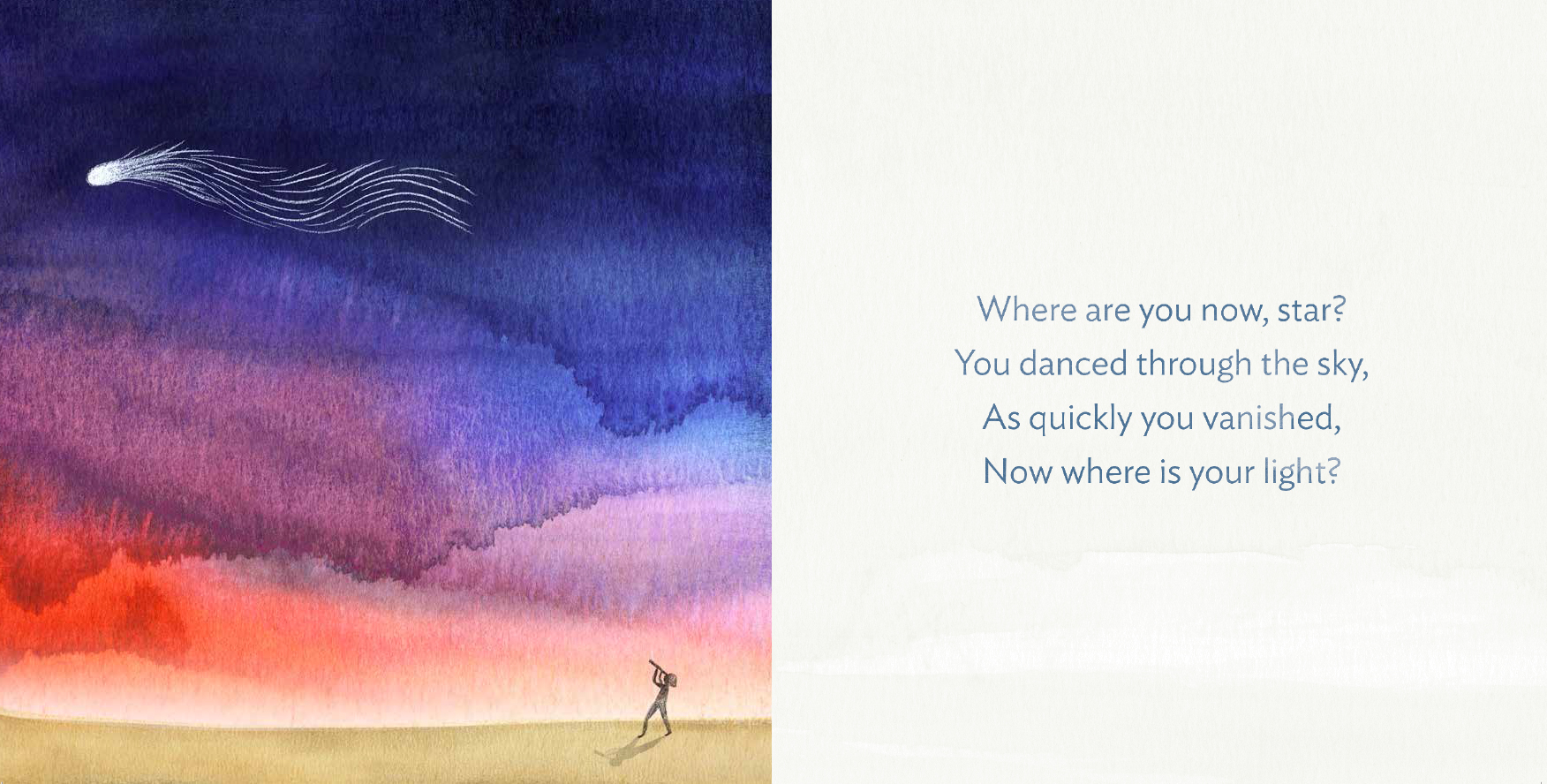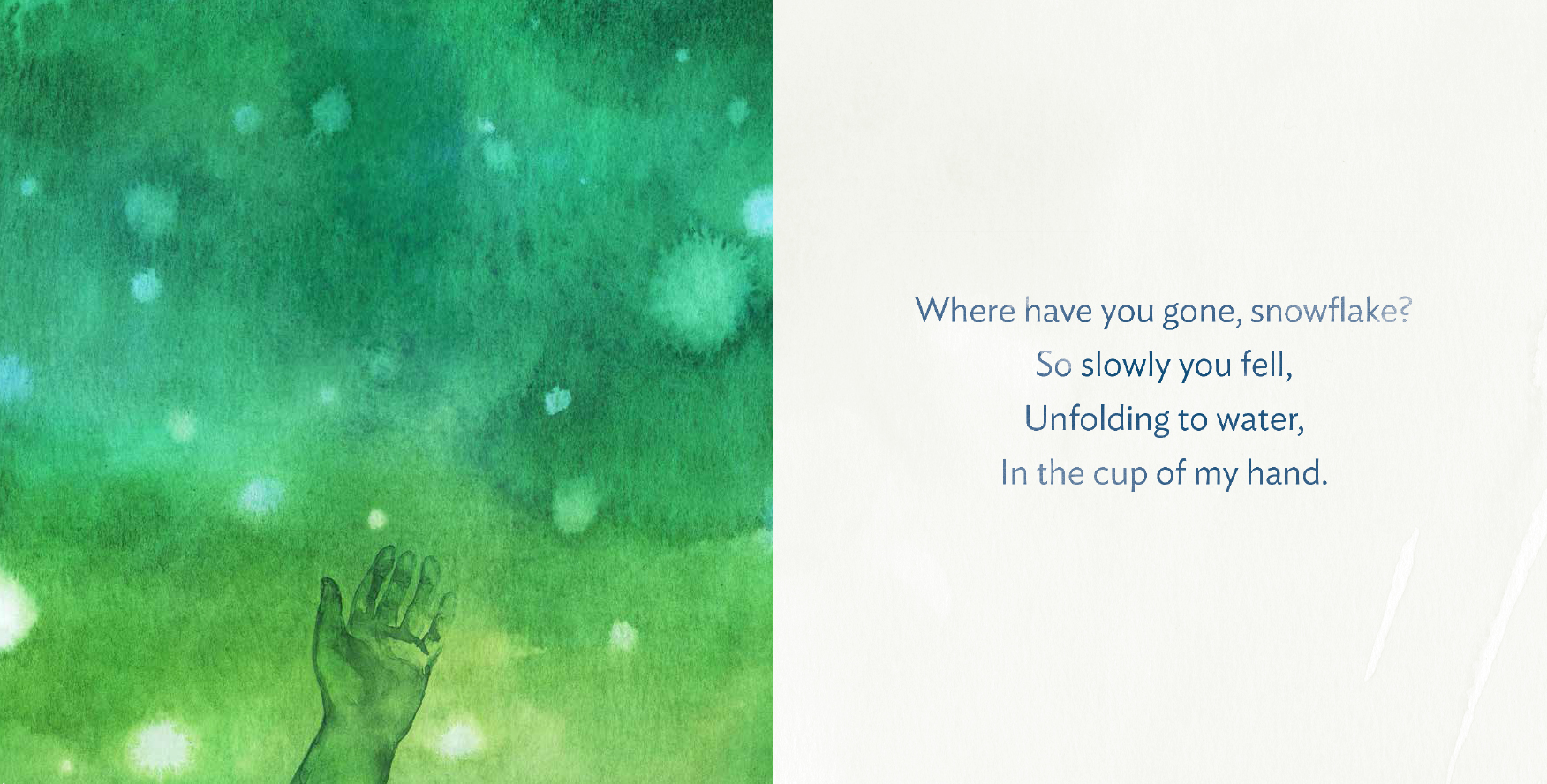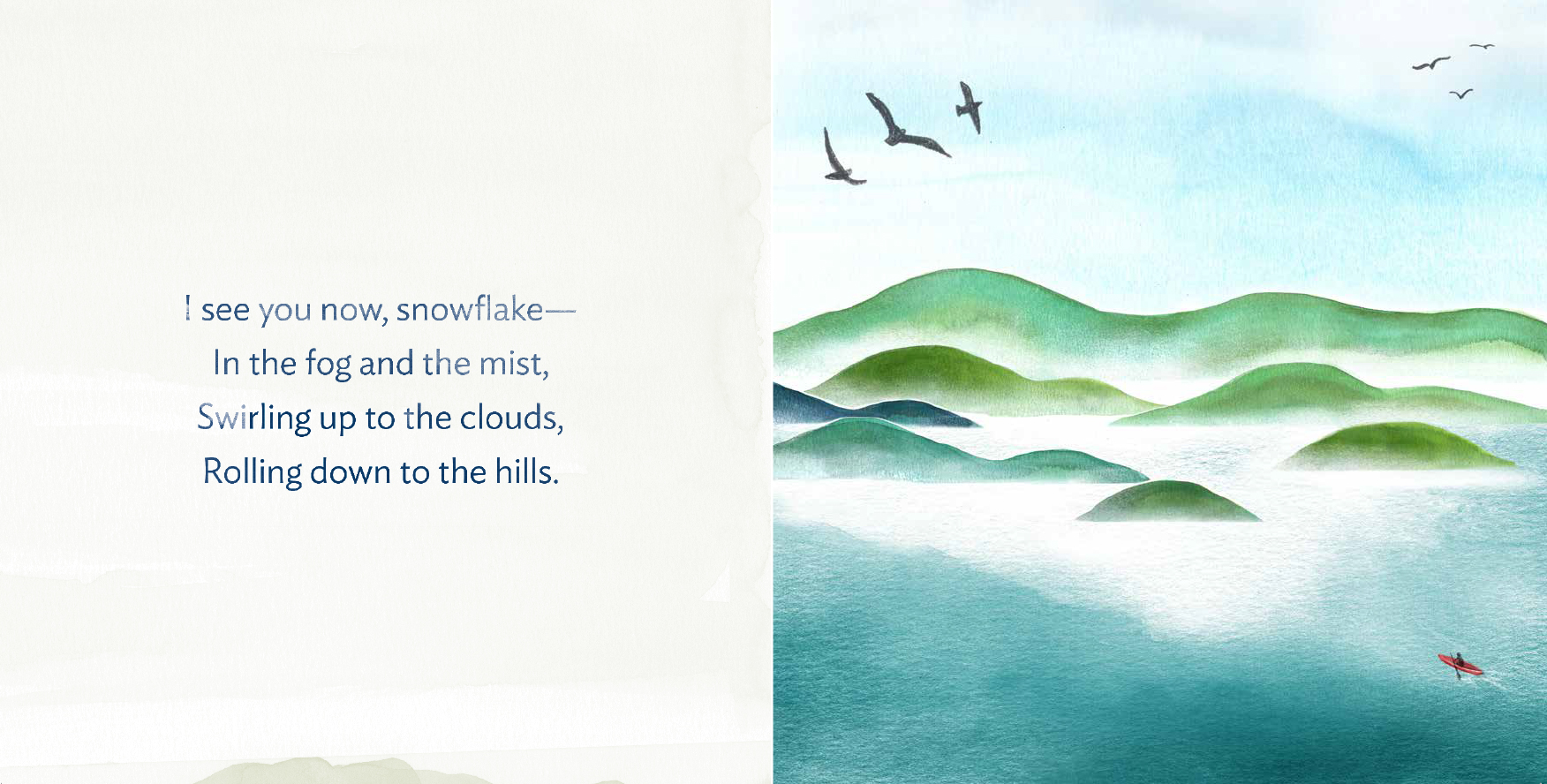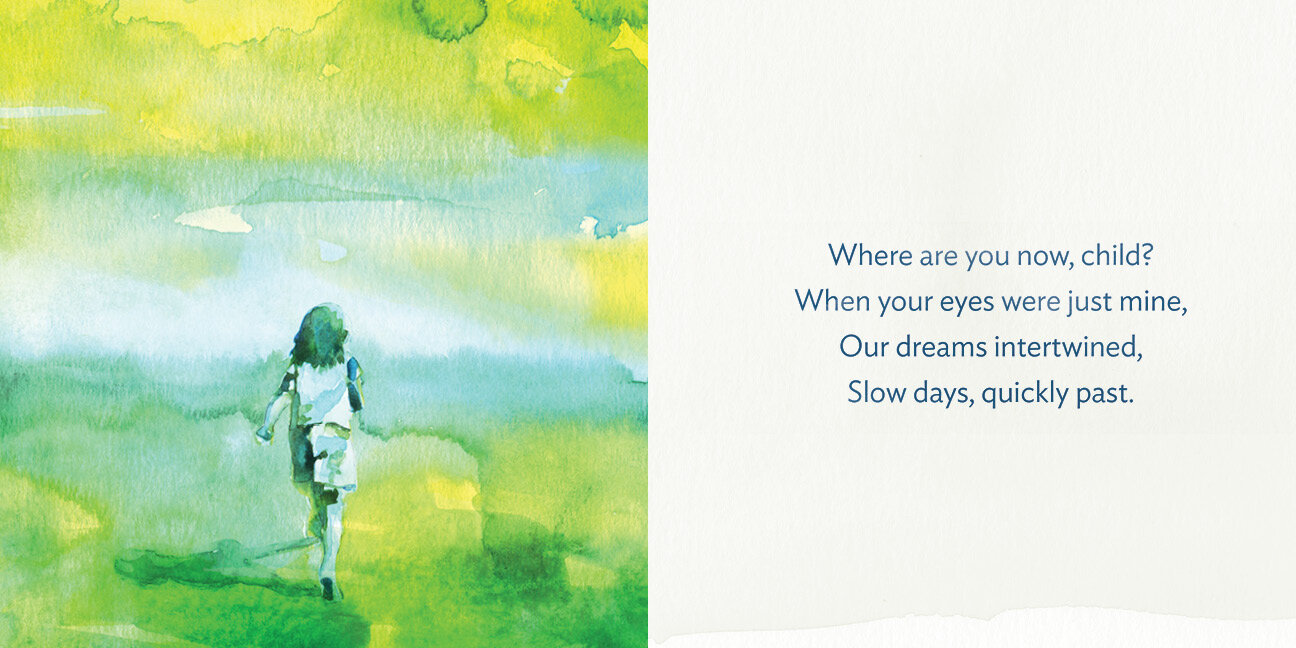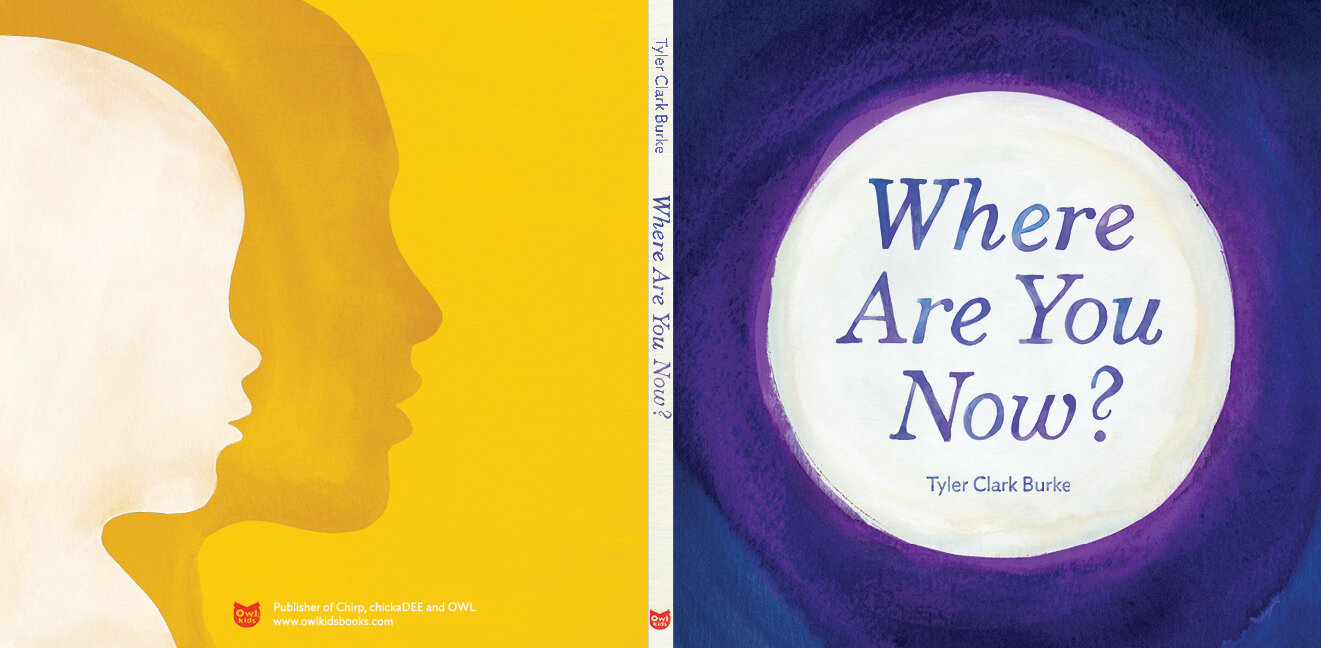“This insightful and thought-provoking title can be shared with people of all ages.” — BOOKLIST
“With sumptuous illustrations and thought-provoking verses, Burke’s meditation can serve as a quiet bedtime story or a deep conversation starter.”
— KIRKUS REVIEWS
“This is an important book for any child experiencing the loss of a loved one…” — SCHOOL LIBRARY JOURNAL
I’m often asked what inspired me to write a book about death for children, and I thought I’d share a few thoughts here.
One afternoon, about a month before the ten-year anniversary of my mother’s death, I started jotting down some ideas about how to talk to my kids about dying and death, and quickly realized I couldn’t stop. This subject was also on my mind because my kids had just started asking about dying, and several of my friends were posting their own questions online about lost family members, and how to talk to their kids about death. It was definitely a moment.
I turned to the internet, as I often do, but couldn’t quite find a book that did what I wanted it to do, which was to address the questions and grief of the parent and child at the same time. I also wanted a book to discuss death without religion or gloom, and I wanted a book grounded (if obliquely) in science. Buried within Where Are You Now? is a story of stardust—one that quietly doubles as an origin story for life on earth. Here’s one of the articles on supernovas that inspired the opening and closing spreads, and dovetails with another undercurrent of the book, which is an acknowledgement of the beauty left behind in the wake of death.
Discussions around loss have always been complex for me. My mother was an alcoholic for nearly three decades (recovering shortly before her sudden death), and after so many prolonged periods of estrangement, I realized I had practiced losing her my entire adult life. As I reflected more on the words I wanted to share with my kids, I was surprised by a thought that persisted—that even ten years after her death, my mother felt very much a part of our lives. Not in a religious or spiritual way, I simply thought about her every day, and almost always in a good light. When I was little, my mother and I were very close, and our interests remain eerily similar. When contributing to her obituary, I realized in many ways I was writing my own.
And so, parenthood for me has been about recreating and celebrating the best (and kookiest) memories of my childhood, while also making better decisions to heal the worst ones. In Where Are You Now?, I wanted to write an upbeat (and hopefully uplifting) picture book about death which also celebrated the connected experiences of positivity, progress, and growth.
Original art from Where Are You Now? from the Owlkids giveaway.
I’ve had the opportunity to chat with some wonderful people about Where Are You Now? , especially in private messages here or on Instagram. Thank you for sharing your stories of love, death, and grief with me. xoxo
I was recently interviewed by Matt Galloway on CBC’s Metro Morning, and completed the Going Pros & Cons survey for Open Book (check out their site if you haven’t already). I did my best to answer several questions, including, “The advice [you] would give someone trying to get a book published for the first time.”
Here, also, is an excerpt from my favourite in-depth interview to-date with She Does The City:
“There were times, previously, when I felt done with grieving, and other times—like when I was pregnant with my daughter—that I felt a deep sadness, even fear, that having a daughter would remind me too poignantly of her absence.
But when ten years rolled up I was surprised by a new string of words that kept intruding on my thoughts:
‘She gets to come back now.’”
BOOKLIST REVIEW
What happens to things when they are no longer visible, or no longer here at all? Author-illustrator Burke asks questions in free verse throughout the text and then offers quietly profound answers that can reassure and comfort readers (“Where have you gone, snowflake? / So slowly you fell, / Unfolding to water, / In the cup of my hand”). Passages explore how what's lost may not be lost forever: the brilliance of the sun isn’t gone at sundown—its light makes the moon shine. And a seed buried deep in the ground hasn’t disappeared completely when it may one day become a plant. The idea of items transforming into something else can extend to people who are no longer living; though a loved one may not be here in the physical sense, remembering them can keep them close. Large, lovely watercolor paintings appear on one page while the accompanying text, printed on a white backdrop, is on the adjacent page. This insightful and thought-provoking title can be shared with people of all ages.
KIRKUS REVIEW
A study of impermanence and transformation.
Do shooting stars disappear? Or do they transform into something else? In Burke’s opening spread, a figure admires a shooting star that streaks across the blue, purple, and red sunset. As the fleeting light disappears, the words read, “Where are you now, star?” And so the conversation begins. From the vastness of the shooting star in the sky to the tininess of the grains of rocks and sea glass it can transform into, the star becomes part of the Earth. As a hand reaches to catch a snowflake, water’s journey—as fog and mist when it swirls “up to the clouds” and rolls “down to the hills”—is explored. But transformation does not happen only in inanimate objects. It happens in plants, like the seed that grows into a tree, which bears apples, and in humans, when, “dreams intertwined / Slow days, quickly past.” The verses and illustrations are vague enough to allow wide-ranging conversations. Without any specificity in human characters’ identity—only silhouettes are displayed—exchanges about death are prompted as the narrator says, “I see you now, still— / Even though you aren’t here.” With sumptuous illustrations and thought-provoking verses, Burke’s meditation can serve as a quiet bedtime story or a deep conversation starter.
SCHOOL LIBRARY JOURNAL REVIEW
What happens to things when they disappear from view; are they gone forever? A shooting star blazes across the night sky, fading into the darkness as it travels. Later, a seed transforms into a tree, completely unrecognizable from its initial form. Still later, a child’s visage ceases to be visible until it is found in the face of that child’s child. Finally, the sun departs from the sky to make way for the moon, reflecting the sun’s brilliant light. Matter cannot be created or destroyed: it can only change forms. Such is the case for each object discussed in this book, from the fiery shooting star to the loving parent. The narrator of this story speaks in poetic phrases, moving from the question of where an item was to where it now is. Though the seed is gone, a tree stands in its place; though the sun has set, it can be seen in its reflection off of the moon. Each page features a short, four-line poem on one side with a colorful, descriptive illustration on the other. Watercolor images enhance the emotional backbone of this story, their rich layers of color mirroring innate human feelings. While at first glance this story is about transitions, it also serves as a foundation for discussing loss with young children.
VERDICT: THIS IS AN IMPORTANT BOOK FOR ANY CHILD EXPERIENCING THE LOSS OF A LOVED ONE, ESPECIALLY IF IT IS THE FIRST SUCH OCCASION IN THEIR LIFE.


